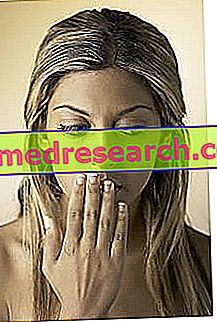
Scientific name
Helichrysum italicum
Family
Asteraceae (Compositae)
Origin
Europe
Used Parts
Drug consisting of flowering tops
Chemical constituents
- Essential oil (nerol, nerile acetate, geraniol, eugenol)
- Flavonoids (elicrisine)
Helichrysum in Herbalist: Properties of Helichrysum
The essential oil of helichrysum has anti-inflammatory and antiallergic activities, especially for the respiratory system. On medical prescription, the helichrysum can be used, suitably diluted, also as an aerosol in subjects with chronic catarrhal diseases.
In cosmetics, the extracts of helichrysum are used in solar products and in products for cleansing greasy, asphyxiated, comedonic or irritated skin.
Biological activity
Among the alleged medicinal properties variously ascribed to the helichrysum we recall those choleretic, stimulating gastric and pancreatic secretion, cholesterol-lowering, diuretic, spasmolytic, antibacterial, antifungal, connective and anti-haemorrhoids anti-inflammatory.
Only some of the aforementioned properties have been confirmed by experimental evidence, while others seem to have no scientific basis whatsoever.
However, from the various research carried out, it seems that the helichrysum is in any case endowed with interesting and potential therapeutic activities.
In fact, studies have shown that the helichrysum extracts have antibacterial activity (in particular, against Staphylococcus aureus strains), antifungal (especially against Candida albicans ), anti-inflammatory and antioxidant.
All these activities seem to be ascribable above all to the flavonoids contained within the plant itself.
The antibacterial action is exercised both through the direct inhibition of the growth of microorganisms, and through the inhibition of the synthesis - by the bacteria themselves - of enzymes fundamental for their survival, such as, for example, coagulase.
From studies conducted both in vitro and in vivo, instead, it emerged that the helichrysum exerts its anti-inflammatory action through different mechanisms of action, among which we recall the inhibition of different steps of the arachidonic acid cascade that lead to the synthesis of pro-inflammatory prostaglandins, thromboxanes and leukotrienes. Furthermore, it appears that the anti-inflammatory action of the helichrysum is also aided by the antioxidant activity, always exerted by the flavonoids contained in it, through the inhibition of lipid peroxidation and through an action of free-radical scavenger.
The flavonoids contained within the helichrysum, moreover, in studies conducted in vivo, have also shown to possess anti-erythematosic and photoprotective properties and have proved to be a potential valid aid in the treatment of skin disorders and diseases, such as psoriasis and eczema.
Finally, antiallergic activities - mainly performed at the level of the respiratory tract - and antitussive activities are also attributed to helichrysum and its essential oil.
For all these reasons, it is not uncommon for the plant to be included in the composition of herbal teas with indications for the treatment or prevention of the aforementioned disorders (for more detailed information about the uses of helichrysum, we recommend reading the dedicated article "Helichrysum in the Herbal teas ").
However, despite the positive results obtained from the various researches carried out, other and more in-depth clinical studies are certainly needed to evaluate the real therapeutic efficacy and safety of use of helichrysum and its extracts.
Helichrysum in folk medicine and homeopathy
Popular medicine has been exploiting the properties of the helicopter for a long time. In fact, the flowers and leaves of the plant are used in this area for the treatment of a wide variety of disorders, such as colds, coughs, inflammations, disorders of the liver and gall bladder, and are even used as a remedy to combat insomnia . Moreover, traditional medicine considers helichrysum a valid regenerating remedy for the skin and for this reason it uses it in the treatment of skin diseases and disorders, such as dermatitis, acne, boils, stretch marks and scars.
As far as homeopathic medicine is concerned, on the other hand, at the moment the helichrysum is not used in this area.
Contraindications
Avoid using helichrysum in cases of proven hypersensitivity to one or more components and exercise caution in allergy sufferers.
As a precautionary measure, the use of helichrysum is not recommended even during pregnancy and during breastfeeding.
Pharmacological Interactions
- no important interactions with other drugs are known.



